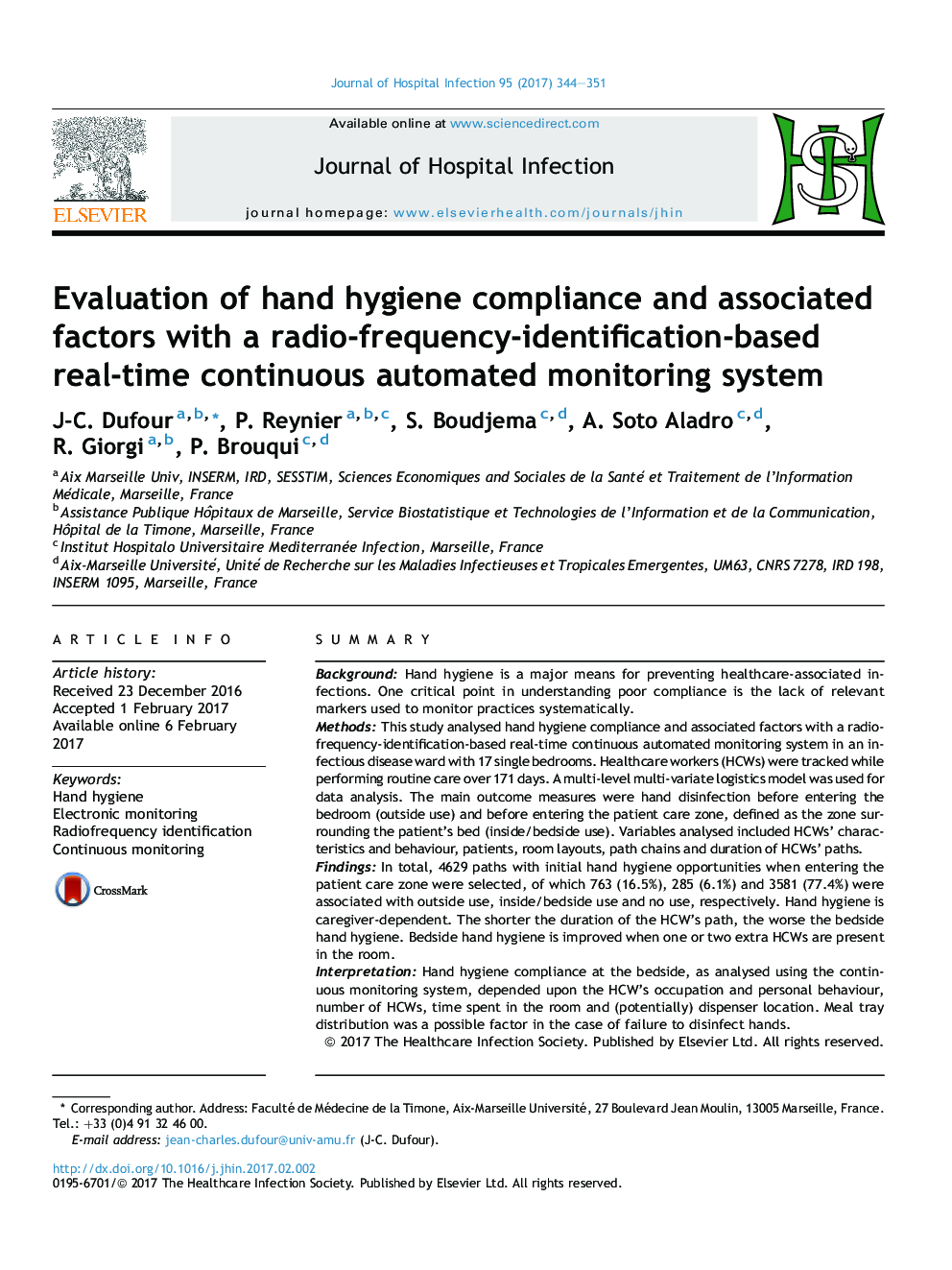| کد مقاله | کد نشریه | سال انتشار | مقاله انگلیسی | نسخه تمام متن |
|---|---|---|---|---|
| 5668309 | 1407896 | 2017 | 8 صفحه PDF | دانلود رایگان |
SummaryBackgroundHand hygiene is a major means for preventing healthcare-associated infections. One critical point in understanding poor compliance is the lack of relevant markers used to monitor practices systematically.MethodsThis study analysed hand hygiene compliance and associated factors with a radio-frequency-identification-based real-time continuous automated monitoring system in an infectious disease ward with 17 single bedrooms. Healthcare workers (HCWs) were tracked while performing routine care over 171 days. A multi-level multi-variate logistics model was used for data analysis. The main outcome measures were hand disinfection before entering the bedroom (outside use) and before entering the patient care zone, defined as the zone surrounding the patient's bed (inside/bedside use). Variables analysed included HCWs' characteristics and behaviour, patients, room layouts, path chains and duration of HCWs' paths.FindingsIn total, 4629 paths with initial hand hygiene opportunities when entering the patient care zone were selected, of which 763 (16.5%), 285 (6.1%) and 3581 (77.4%) were associated with outside use, inside/bedside use and no use, respectively. Hand hygiene is caregiver-dependent. The shorter the duration of the HCW's path, the worse the bedside hand hygiene. Bedside hand hygiene is improved when one or two extra HCWs are present in the room.InterpretationHand hygiene compliance at the bedside, as analysed using the continuous monitoring system, depended upon the HCW's occupation and personal behaviour, number of HCWs, time spent in the room and (potentially) dispenser location. Meal tray distribution was a possible factor in the case of failure to disinfect hands.
Journal: Journal of Hospital Infection - Volume 95, Issue 4, April 2017, Pages 344-351
